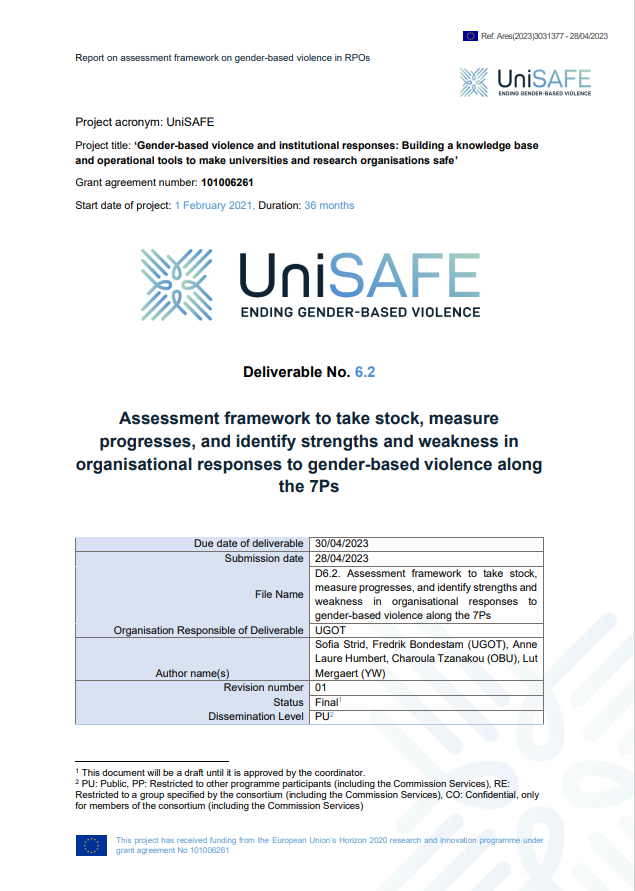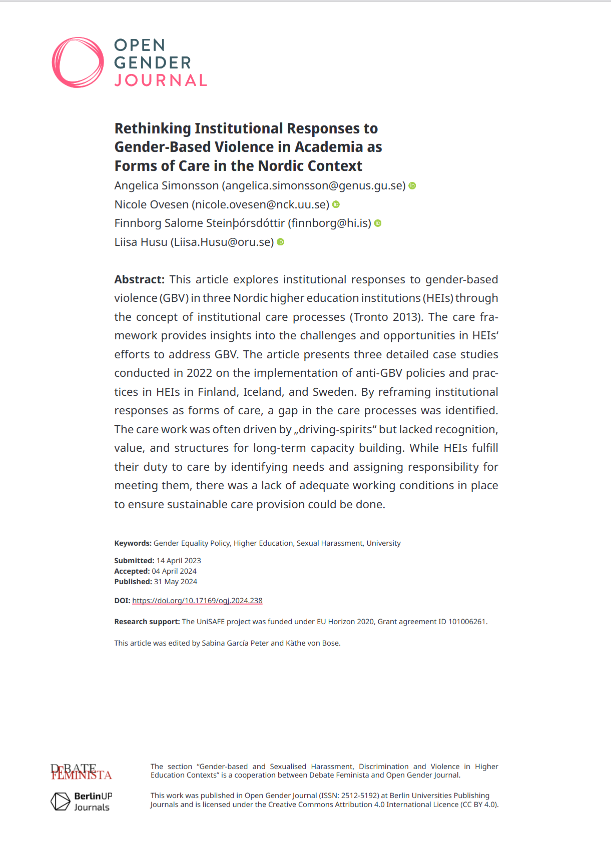Fredrik Bondestam, Associate Professor of Sociology and Director of the Swedish Secretariat for Gender Research, is participating in the EU project UniSAFE, which has conducted several major studies of gender-based violence in academia in the EU.
UniSAFE works with policy development on gender-based violence in the European Research Area, ERA. In the article Addressing Gender-Based Violence through the ERA Policy Framework: A Systemic Solution to Dilemmas and Contestations for Institutions, published in the International Journal of Higher Education, Fredrik Bondestam suggests how higher education institutions can develop the implementation of ERA's policy, including a new model for monitoring and evaluation.
Lack of support and professional development undermines care work
Angelica Simonsson has a PhD in pedagogical work and is a senior analyst at the Swedish Secretariat for Gender Research. Together with researchers Nicole Ovesen, National Centre for Knowledge on Men's Violence Against Women (NCK) at Uppsala University, Finnborg Salome Steinþórsdóttir, University of Iceland and Liisa Husu, Örebro University, she has published the article Rethinking Institutional Responses to Gender-Based Violence in Academia as Forms of Care in the Nordic Context in the Open Gender Journal, also drawing on UniSAFE's research. The article examines the management of gender-based violence at the institutional level through detailed case studies from three Nordic higher education institutions in Finland, Iceland and Sweden.
In the article, factors are identified that can help explain the gap that often arises between implementation and practice. It indicates that despite the institutions' statutory responsibilities, shortcomings in working conditions and support structures, as well as a lack of long-term capacity building, make it impossible to ensure the care work required to counteract gender-based violence at institutions.




